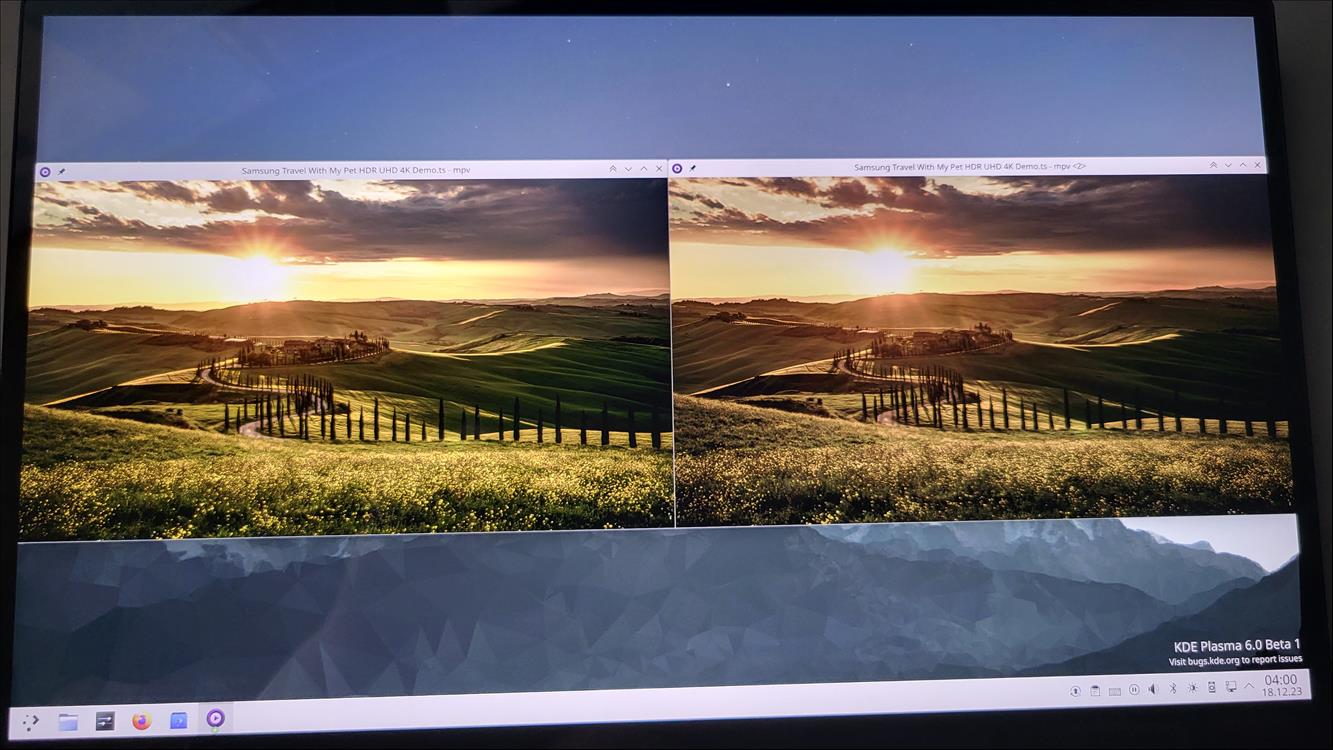
Chromium Introduces Native HDR Support For Wayland
The Chromium browser has rolled out native High Dynamic Range support for Linux users running Wayland sessions, marking a significant step forward for Linux-based systems. This long-awaited feature brings an enhanced visual experience, making it easier for users to enjoy vivid colours and improved contrast across supported websites and applications.
Historically, Wayland, the modern display server protocol for Linux, has faced challenges when it comes to supporting high-end graphics features such as HDR. This has been due to the intricate way that Wayland handles rendering and compositing, which differs from the older X11 protocol. However, with the introduction of native HDR support in Chromium, Linux users running Wayland can now take full advantage of displays that support HDR10 or Dolby Vision, offering an experience comparable to other platforms that have already embraced HDR technology.
This new feature was introduced in Chromium version 116, which integrates support for HDR through the use of the Vulkan API. Vulkan is a modern, high-performance graphics API that allows applications to access the full potential of GPU hardware, and in this case, it facilitates HDR rendering on Wayland. Chromium's developers have worked closely with the Wayland community to ensure compatibility, with several prominent Linux distributions, including Ubuntu and Fedora, already supporting this feature.
For users, the addition of native HDR support means that web content, particularly videos and images that are encoded in HDR formats, will now display with more vibrant colours and finer details. This enhancement is particularly noticeable in streaming services like YouTube, Netflix, and other platforms that deliver HDR content. In addition to video, images and web applications that utilise CSS for colour grading will also see improvements in their appearance.
See also Linux Foundation India Builds on First Year with New AlliancesThe introduction of HDR support is part of a broader trend of increasing focus on high-quality media experiences in the Linux ecosystem. Wayland has long been seen as an up-and-coming alternative to the aging X11 protocol, which was not designed to handle modern graphics needs. While X11 still dominates in many Linux environments, Wayland's growing adoption has led to a range of improvements in graphic rendering, making it a more competitive platform for users who rely on cutting-edge visuals.
One of the major advantages of this new functionality is the streamlined integration between the Chromium browser and the Wayland protocol. Unlike X11, which requires additional software layers and configurations to support HDR, Wayland allows for more direct access to the hardware, providing better performance and lower latency. This translates into smoother, more fluid video playback and a more responsive user experience overall.
Despite these advances, the full potential of HDR in Linux is still a work in progress. Support for HDR in Wayland and other open-source applications remains limited, and not all Linux users will immediately benefit from the new features. The quality of HDR content displayed will also depend on the user's hardware, with compatible monitors and GPUs being essential for optimal performance. However, this step by Chromium represents a solid foundation for future developments in Linux graphics support.
As the feature becomes more widely used, it is expected that other major applications and frameworks will follow suit, integrating HDR support into their platforms for Wayland-based systems. The move is seen as an important step in the ongoing efforts to bring Linux closer in line with other operating systems like Windows and macOS, which have long had robust support for HDR content.
See also Google-Verified VPN App Exposed for User SurveillanceFor developers and content creators, this opens up new possibilities for delivering high-quality media experiences to Linux users. Web developers, in particular, will be able to better leverage HDR capabilities in their websites, ensuring that users experience content as it was intended to be seen. The broader adoption of HDR on Linux also means that more consumers will begin to expect similar visual quality from all their devices, raising the bar for graphic standards across the entire ecosystem.
Notice an issue? Arabian Post strives to deliver the most accurate and reliable information to its readers. If you believe you have identified an error or inconsistency in this article, please don't hesitate to contact our editorial team at editor[at]thearabianpost[dot]com . We are committed to promptly addressing any concerns and ensuring the highest level of journalistic integrity. Legal Disclaimer:
MENAFN provides the
information “as is” without warranty of any kind. We do not accept
any responsibility or liability for the accuracy, content, images,
videos, licenses, completeness, legality, or reliability of the information
contained in this article. If you have any complaints or copyright
issues related to this article, kindly contact the provider above.


















Comments
No comment